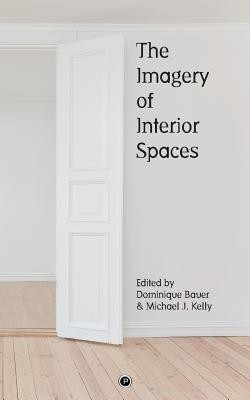
- We will send in 10–14 business days.
- Author: Michael J Kelly
- Publisher: PUNCTUM BOOKS
- ISBN-10: 1950192199
- ISBN-13: 9781950192199
- Format: 12.7 x 20.3 x 1.3 cm, minkšti viršeliai
- Language: English
- SAVE -10% with code: EXTRA
Reviews
Description
On the unstable boundaries between "interior" and "exterior," "private" and "public," and always in some way relating to a "beyond," the imagery of interior space in literature reveals itself as an often disruptive code of subjectivity and of modernity. The wide variety of interior spaces elicited in literature -- from the odd room over the womb, secluded parks, and train compartments, to the city as a world under a cloth -- reveal a common defining feature: these interiors can all be analyzed as codes of a paradoxical, both assertive and fragile, subjectivity in its own unique time and history. They function as subtexts that define subjectivity, time, and history as profoundly ambiguous realities, on interchangeable existential, socio-political, and epistemological levels.
This volume addresses the imagery of interior spaces in a number of iconic and also lesser known yet significant authors of European, North American, and Latin American literature of the nineteenth, twentieth, and twenty-first centuries: Djuna Barnes, Edmond de Goncourt, William Faulkner, Gabriel GarcÃa Márquez, Benito Pérez Galdós, Elsa Morante, Robert Musil, Jules Romains, Peter Waterhouse, and Ãmile Zola.
EXTRA 10 % discount with code: EXTRA
The promotion ends in 23d.03:46:20
The discount code is valid when purchasing from 10 €. Discounts do not stack.
- Author: Michael J Kelly
- Publisher: PUNCTUM BOOKS
- ISBN-10: 1950192199
- ISBN-13: 9781950192199
- Format: 12.7 x 20.3 x 1.3 cm, minkšti viršeliai
- Language: English English
On the unstable boundaries between "interior" and "exterior," "private" and "public," and always in some way relating to a "beyond," the imagery of interior space in literature reveals itself as an often disruptive code of subjectivity and of modernity. The wide variety of interior spaces elicited in literature -- from the odd room over the womb, secluded parks, and train compartments, to the city as a world under a cloth -- reveal a common defining feature: these interiors can all be analyzed as codes of a paradoxical, both assertive and fragile, subjectivity in its own unique time and history. They function as subtexts that define subjectivity, time, and history as profoundly ambiguous realities, on interchangeable existential, socio-political, and epistemological levels.
This volume addresses the imagery of interior spaces in a number of iconic and also lesser known yet significant authors of European, North American, and Latin American literature of the nineteenth, twentieth, and twenty-first centuries: Djuna Barnes, Edmond de Goncourt, William Faulkner, Gabriel GarcÃa Márquez, Benito Pérez Galdós, Elsa Morante, Robert Musil, Jules Romains, Peter Waterhouse, and Ãmile Zola.


Reviews